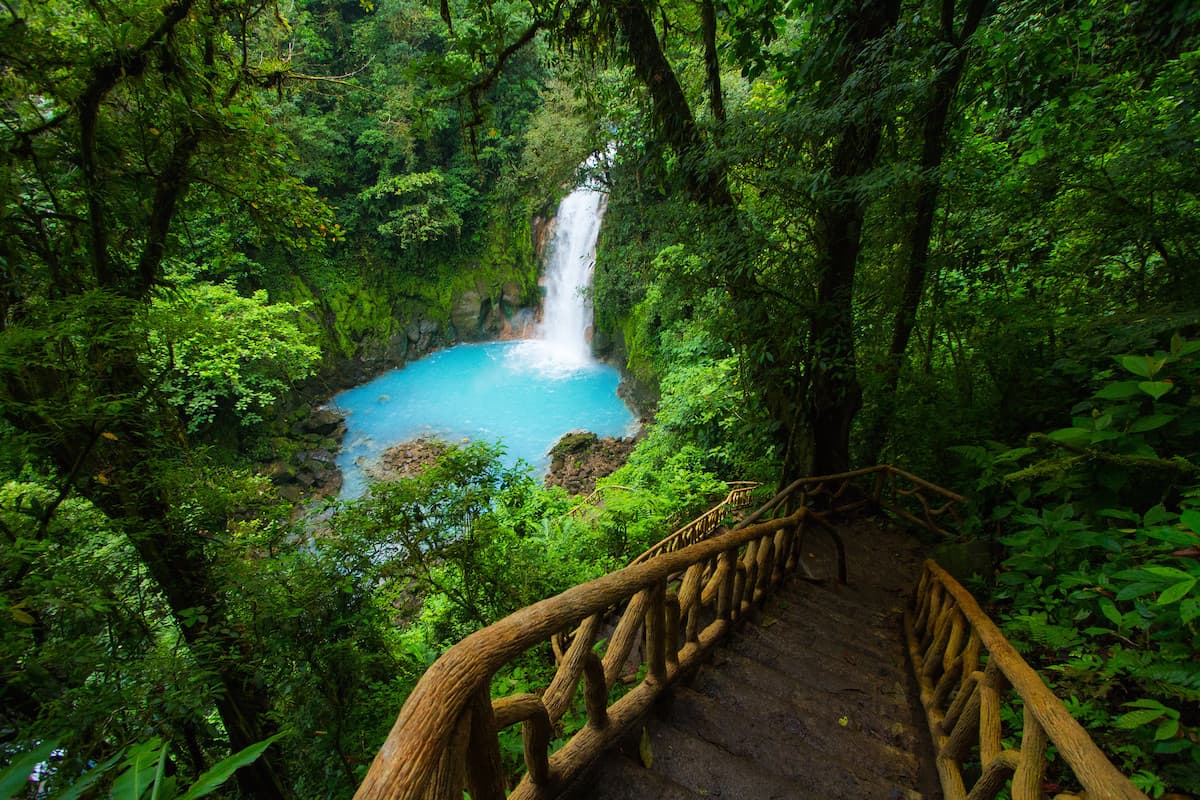
Costa Rica’s National Parks: Exploring the Nation’s Natural Beauty from Your Tamarindo Base Camp
Updated: June 17 2024
Nestled along the sun-drenched Pacific coast of Costa Rica, Tamarindo is a haven for surfers, sun worshippers, and nature enthusiasts alike. But while the azure waves and vibrant nightlife might draw many to this coastal gem, it’s the surrounding natural beauty that truly sets it apart.
Beyond the bustling streets and beautiful vacation rentals in Tamarindo, a world of lush rainforests, rare wildlife, and breathtaking landscapes beckons in the nearby national parks. Ready to venture off the beaten path and dive deep into Costa Rica’s verdant heart? Join us as we explore the national treasures that lie just a stone’s throw from Tamarindo.
Explore Tropical Jewels Near Tamarindo
Over one quarter of Costa Rica has been dedicated as a protected area(s). This includes, of course, reserves and national parks. With this substantial amount of land set aside for preservation, it can seem like a daunting task to choose the best national parks to visit during your stay in the Tamarindo area of Costa Rica.
While the entire country is clearly filled with great parks to visit, including the lovely Corcovado National Park and Tortuguero National Park, here are three park options at a reasonable distance from Tamarindo. You can easily visit these overnight or for a weekend stay.
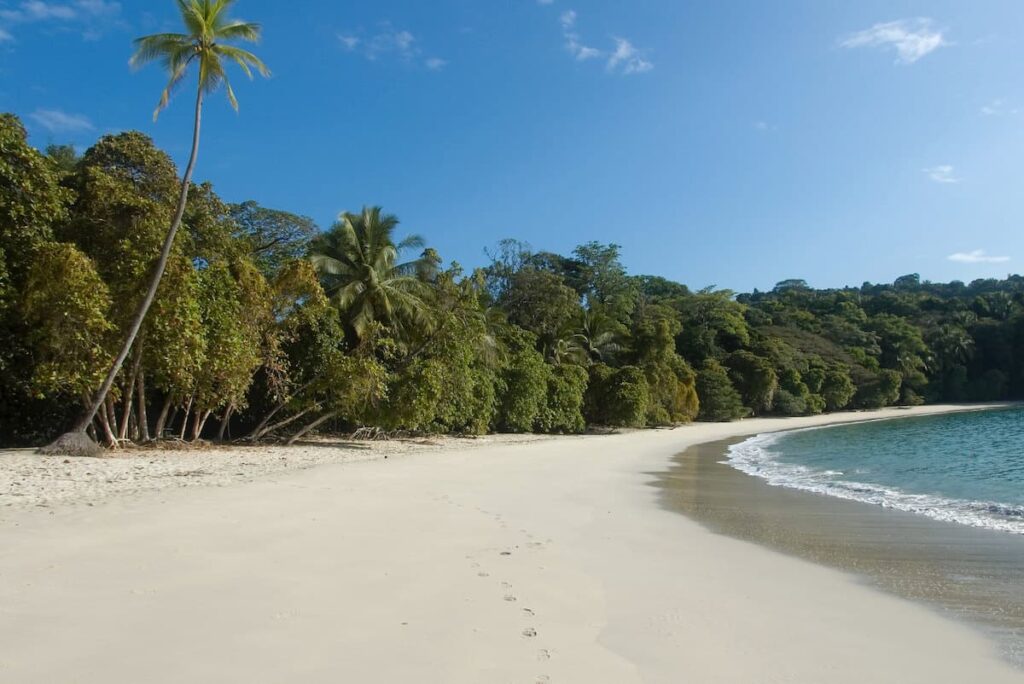
Manuel Antonio
Manuel Antonio National Park, located on the Pacific Coast of Costa Rica, and in the province of Puntarenas, is one of the country’s most celebrated and cherished natural treasures. Despite its relatively small size, this park is historically significant for its role in Costa Rica’s conservation movement.
Established in 1972, Manuel Antonio was created to preserve the rich biodiversity of the region and protect it from development pressures. At over 5 hours away from Tamarindo, it is important to plan for at least an overnight stay, if not an entire weekend excursion.
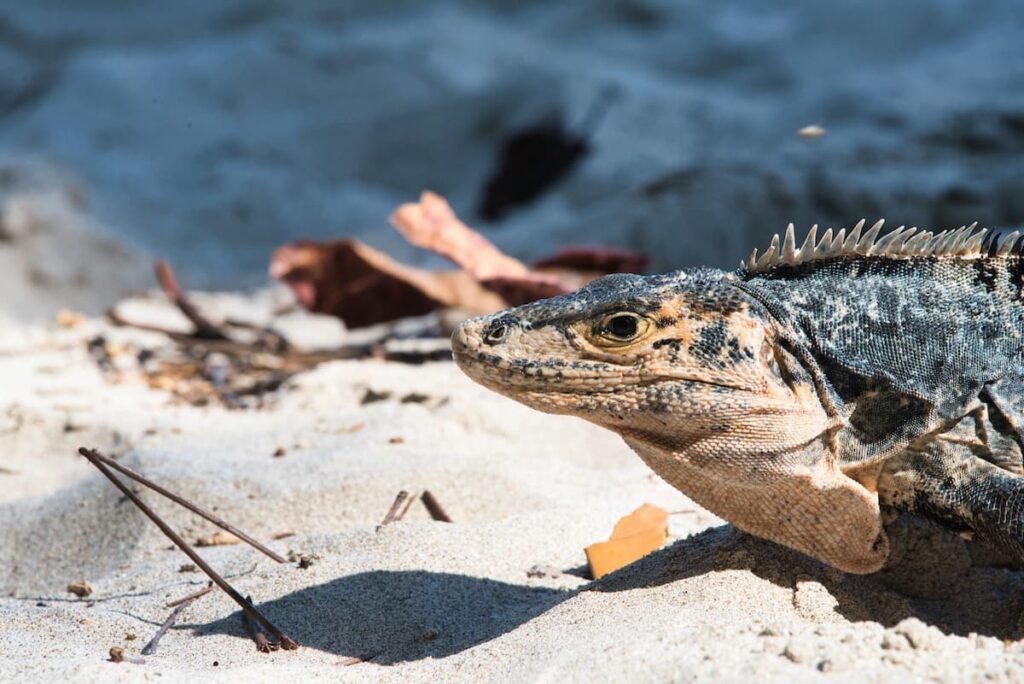
Flora & Fauna
Manuel Antonio National Park is a captivating blend of diverse ecosystems, ranging from the dense rainforest and mystic mangrove swamps to pristine beaches and vibrant coral reefs. Within this ecological tapestry, visitors are treated to a rich array of wildlife. Among the park’s residents are the languid three-toed sloths, expressive white-faced capuchin monkeys, and resonant howler monkeys.
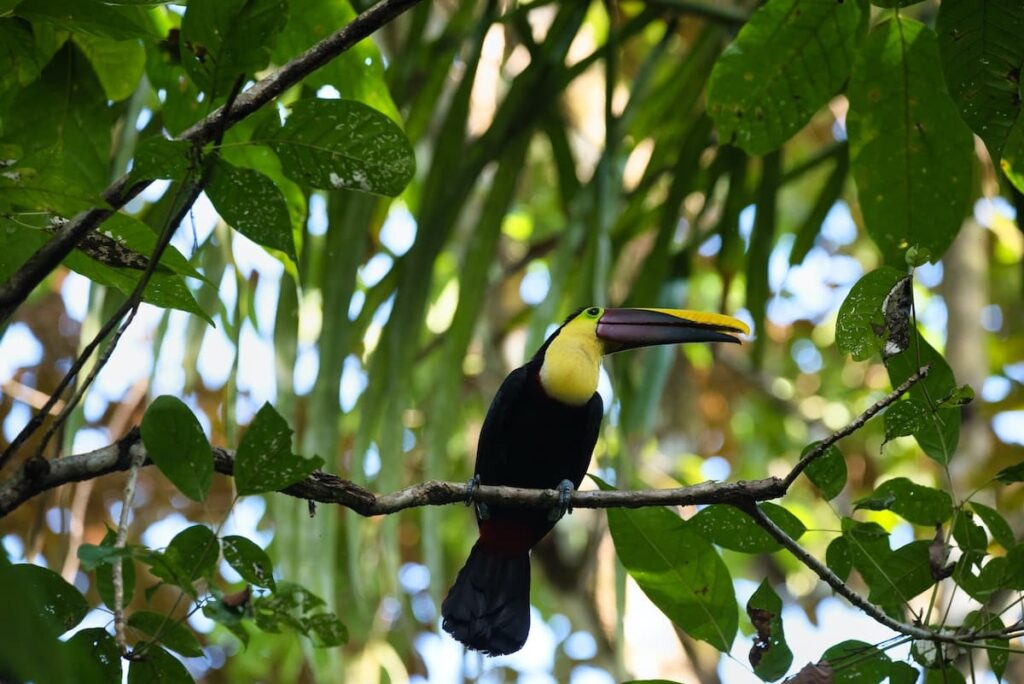
Bird enthusiasts will be enthralled by the over 184 bird species present, including the radiant scarlet macaw and the secretive motmots. The grounds also teem with reptilian life like iguanas, swift basilisks, and the enigmatic boa constrictors.
Beyond the terrestrial beauty, the surrounding waters offer a wealth of marine life nestled in the coral formations, beckoning snorkeling aficionados. This park, beyond its fauna, invites exploration of its forests, swamps, lagoons, and beaches, providing a comprehensive Costa Rican nature experience.
Activities
Manuel Antonio National Park offers visitors a range of activities. Explorers can traverse its myriad of hiking trails, with the famed “Punta Catedral” offering panoramic coastal views, and the “Sendero Perezoso” trail providing a gentle walk ideal for spotting the park’s namesake sloths.
After a hike, one can relax on the park’s pristine beaches or delve into snorkeling to explore the vibrant marine life beneath the waves. Other activities at the park include surfing at the park’s stunning beach, repelling and white water rafting. Visitors can also take a guided tour through the park, giving you a well informed experience of the park.

Tenorio Volcano National Park
Tenorio Volcano National Park covers an area of over 18,400 hectares in the northern part of Costa Rica and is located under a three hour drive from Tamarindo. Established in 1995, the park was created to protect the rich biodiversity surrounding the Tenorio Volcano and its associated ecosystems.
Over the years, the park has gained recognition not only for its volcanic wonders but also for its unique river, Rio Celeste, which is famous for its mesmerizing blue hue, a result of the chemical mix of the volcanic minerals with the river’s waters. The Rio Celeste Waterfall is also a huge draw for visitors; making the park an ideal place for budding photographers.
Fun Fact: The Tenorio Volcano National Park adjoins the Tapir Valley Nature Reserve, a former cattle ranch that was rewilded in 2004. The 20-acre wetland within the nature reserve is the only known location of the Tapir Valley tree frog.
Flora & Fauna
Tenorio Volcano National Park is a vibrant hub of biodiversity, encompassed by the dense foliage of primary rainforests and the ethereal mist of cloud forests, the park serves as a refuge for a fascinating array of wildlife. It is home to majestic mammals such as the elusive tapirs, agile pumas, and vocal howler monkeys.
Bird enthusiasts can revel in the sight and sounds of a myriad of avian species, from the vibrant keel-billed toucan and the regal ornate hawk-eagle to the unique three-wattled bellbird. The dense undergrowth and cool water bodies house a range of reptiles and amphibians, including the captivating red-eyed tree frog and the shimmering emerald basilisk.
Amidst this animal diversity, the park also boasts a rich variety of plant life. Towering hardwoods stand sentinel over the forests, while delicate orchids and bromeliads add a splash of color and intricacy to the verdant landscape.
Activities
Tenorio Volcano National Park beckons adventurers and nature enthusiasts with a range of captivating activities. The park’s trails, most notably the one leading to the surreal Rio Celeste waterfall, offer hikers the chance to witness the enchanting blue hue of its waters, a phenomenon where two clear rivers converge to create the iconic cerulean tint.
Birdwatchers can indulge in spotting over 400 diverse bird species, from the striking keel-billed toucan to the elusive ornate hawk-eagle. Though you cannot swim in the natural hot springs in the area, you can still spend your day hiking up to the waterfall and enjoying one of the loveliest spots in Guanacaste along the way.
For those keen on capturing the park’s beauty, the mesmerizing landscapes, from azure rivers to mist-clad forests, provide ample photographic opportunities.
Carara National Park
Just a little over 3 hours away from Tamarindo, the Carara National Park spans over 5,200 hectares and is one of Costa Rica’s oldest protected areas. The Park was originally established as a biological reserve in 1978 and later upgraded to a national park in 1998.
It holds a unique geographical significance, serving as a transition zone between the tropical dry forests of the north and the more humid Pacific rainforests to the south. This unique positioning makes it an ecological melting pot, showcasing a rich blend of both ecosystems.
Flora & Fauna
Situated at the unique intersection of two distinct ecosystems, tropical dry forests and humid Pacific rainforests, Carara National Park emerges as an epitome of biodiversity. The park teems with a diverse range of mammals, from the playful antics of white-faced capuchin monkeys to the secretive prowls of the rare ocelot.
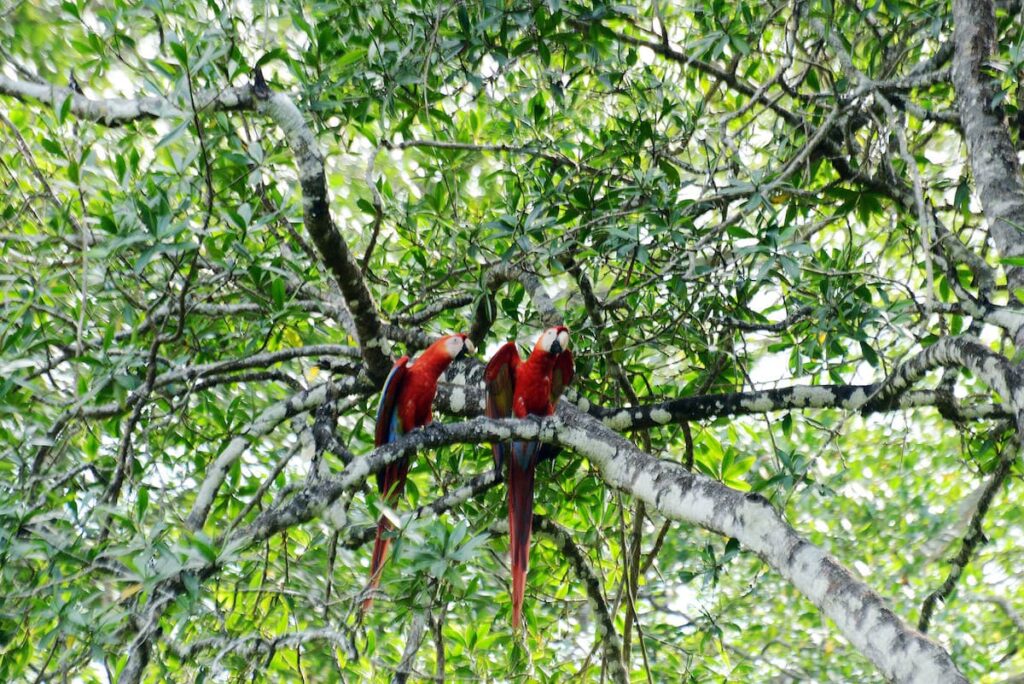
Birdwatchers are in for a treat, with Carara boasting a renowned population of the vibrant scarlet macaws, alongside an impressive roster of over 400 other bird species ranging from diminutive hummingbirds to awe-inspiring raptors. This makes the park a true avian paradise for bird lovers.
Additionally, the park’s wetlands are a sanctuary for the formidable American crocodiles, while its dense forests provide refuge to an assortment of snakes and lizards. Complementing this animal diversity, the park flourishes with varied vegetation. From the shedding deciduous trees and intricate mangrove systems to a spectacular array of flowering plants and ferns.
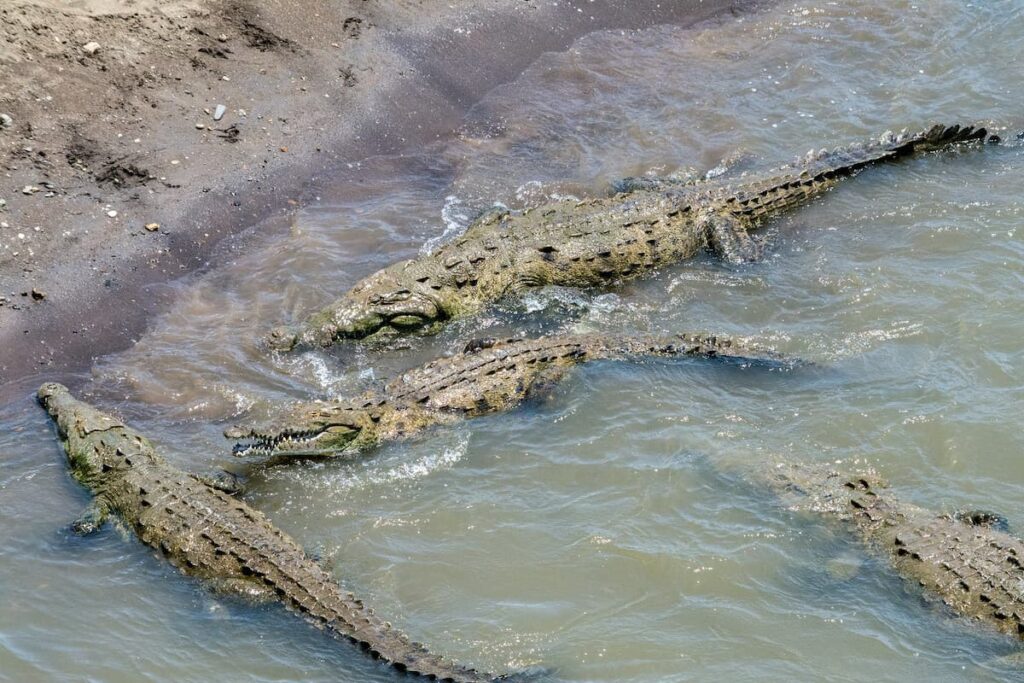
Activities
Visitors can navigate the park’s well-defined hiking trails, with destinations like the Laguna Meándrica offering breathtaking views of a lagoon teeming with crocodiles. The popular tourist spot, the Tarcoles River (AKA “The Crocodile Bridge”) can also be found in the park. It’s a great spot to see some large Costa Rican crocodiles.
For birdwatchers, Carara is a veritable paradise, renowned for its vibrant population of scarlet macaws, amidst a backdrop of over 400 other bird species. The diverse landscapes, from dense forests to meandering rivers, present ample opportunities for photographers to capture the park’s raw beauty.
Those looking for a deeper dive into Carara’s wonders can opt for guided tours, where knowledgeable local guides share the park’s ecological secrets and intricacies, ensuring a memorable and enriching experience.
Explore Costa Rica’s National Treasures
Each park we’ve explored offers a unique glimpse into the country’s diverse ecosystems, teeming with wildlife and draped in verdant flora. Whether you’re an avid birdwatcher, a hiking enthusiast, or simply someone seeking solace in nature’s embrace, the parks near Tamarindo are a testament to Costa Rica’s commitment to conservation and its rich ecological tapestry.
So, on your next Tamarindo getaway, be sure to venture beyond its sun-kissed beaches and plan a day trip to one of Costa Rica’s wild and wonderful national parks.
